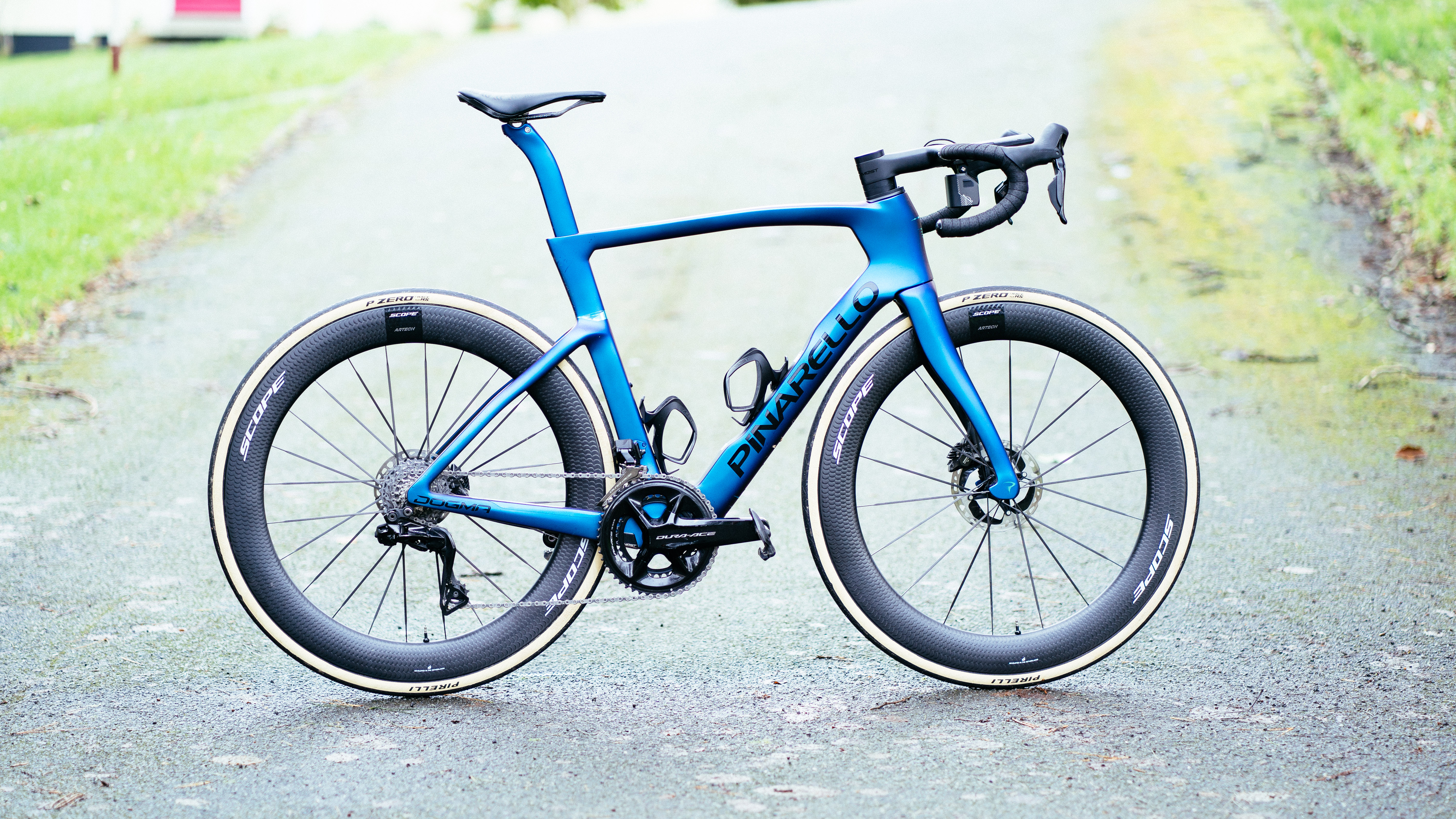Cyclingnews Verdict
Phenomenal performance, both in terms of aerodynamics and weight not just compared to other deep sections wheels but compared to many climbing wheels too. The finish, however, leaves a little to be desired.
Pros
- +
Class-leading aerodynamics
- +
Class-leading weight
- +
Absolutely amazing to ride
Cons
- -
Hubs corrode in the wet
- -
Logos are already chipping off
You can trust Cyclingnews
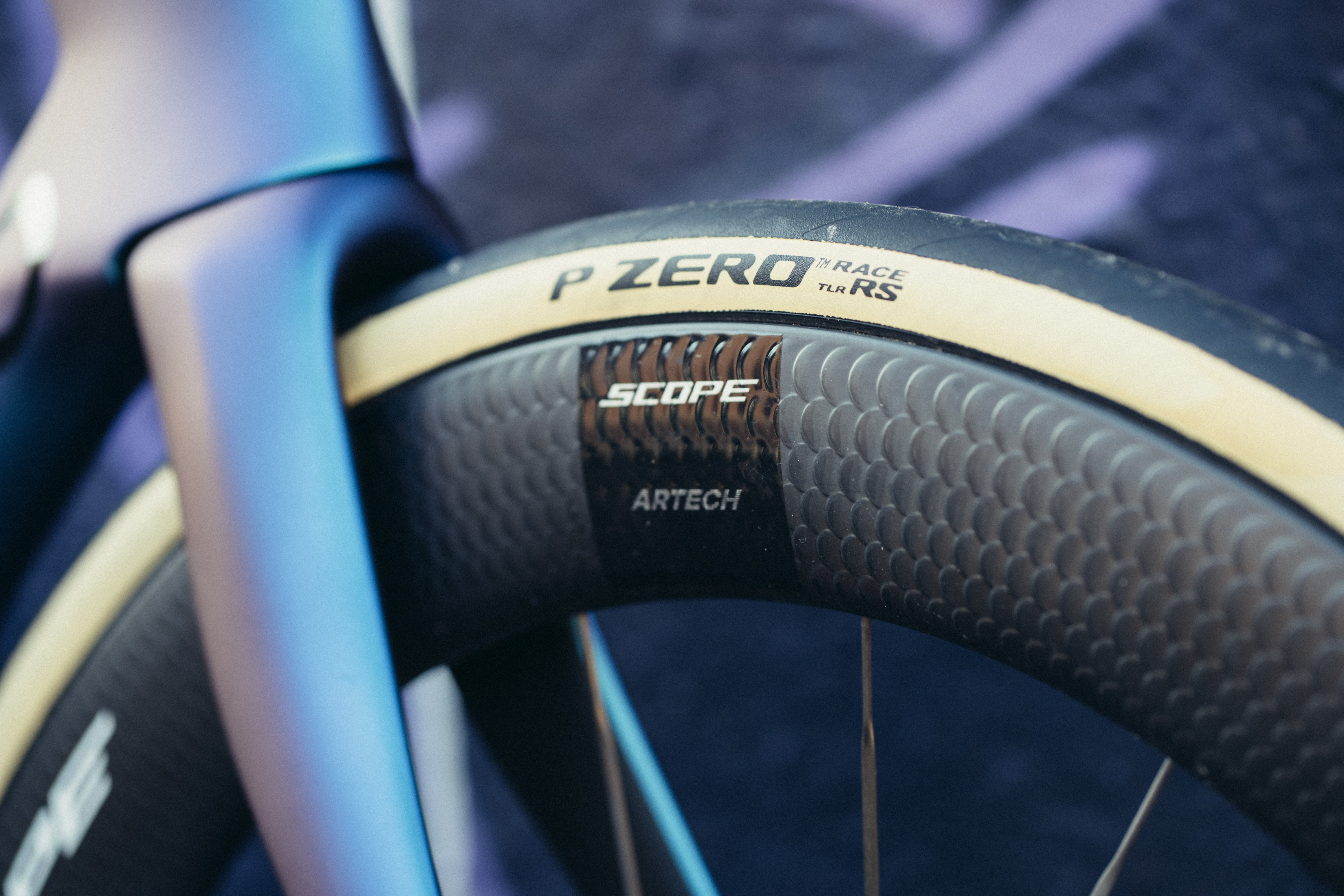
Price: £3,498 / $4,398 or £3,998 / $4,998 with ceramic upgrade
Measured weight: 1,280g
Hookless: No
Depth: 65mm
Width: 25mm internal, 33.7mm external
Here at Cyclingnews we are trying to develop a two-pronged approach to testing the absolute best tech on the market. Our wind tunnel testing, of which the most pertinent for this review is our wind tunnel wheels test, gives us hard, independent data on which products are the fastest under controlled conditions. Data is great, but it doesn’t cover the whole picture, and so a more nuanced review - like this one - is also necessary to tease out the more fuzzy bits like ride feel and value. The Scope Artech 6.A wheels came out the fastest in our lab testing from a cohort of 18 top-end wheelsets. Does that make them the best road bike wheels?
I’ve put them through their paces over a wide variety of terrain since the conclusion of our time in the wind tunnel, mounted up to both a Giant Propel and a Pinarello Dogma. The ‘A’ in the name denotes all-road capabilities, and as such I have smashed about over not only lovely smooth tarmac (if that exists in modern-day Britain), but also on broken backroads with grass up the middle and got absolutely filthy in the process. They are truly astounding to ride, to be perfectly blunt, but they aren’t perfect.
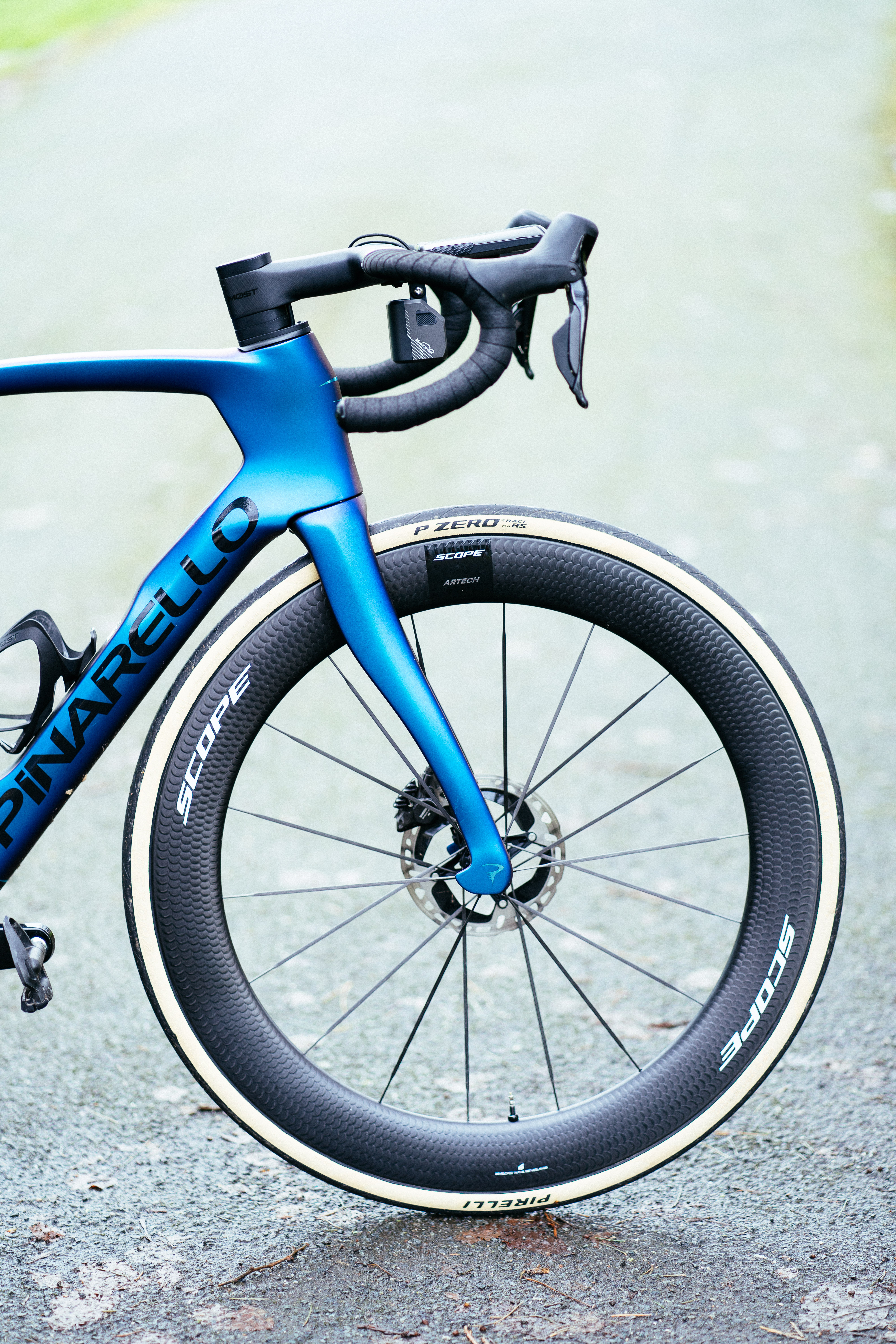
Design and aesthetics
Surface texture on deep rims isn’t necessarily anything new, but I can’t think of a time it’s been this heavily utilised. Zipp’s ‘Firecrest’ wheels feature a series of large and small circular depressions in the rim analogous to the surface of a golf ball, but the Scope Artech 6.A (and all the other Artech wheels) feature what can only be described as large fish scales over the whole rim surface.
According to Scope, but paraphrased heavily by me as its website uses impenetrable terms like ‘Tollmien–Schlichting wave’, the airflow leaving a smooth rim becomes unstable. Adding the scales in generates deliberate turbulence in the airflow as it passes over the rim, which counterintuitively makes it remain more stable as it travels rearwards over the rest of the bike. According to our data at least it is certainly an effective strategy. At 40km/h the Scope Artech 6.A wheelset was 10.51 watts more efficient than our baseline wheelset (a basic set of alloy rims). More realistically though in terms of comparison they were around 0.3 watts more efficient than the nearest competitor - the Synchros Capital SL Aero, two watts more efficient than the mid-table cohort, and four watts more efficient than the slowest race wheels we tested, the Black Inc. 48/58.
The 65mm deep rim profile is about as deep as one would normally consider for standard riding, and the Scope Artech 6.A was also one of the deepest sets we tested too. The 33.7mm external/25mm internal widths are designed to work best aerodynamically with a 30c tyre. This is what I fitted to them, but given we tested in the wind tunnel with 28c tyres it could be that the Artechs might have been even faster.
Bladed spokes were a feature of many of the fastest wheels we tested, and the Artech 6.A were no different in that regard. Internal nipples keeps things more aero, but slightly more of a pain to adjust from a purely mechanical perspective. The spokes are laced to a pair of absolutely wild-looking 3D printed hubs, which are ‘topology optimised’. 3D printing opens up shapes that traditional CNC machining cannot, and the Scope hubs are very organic in form. Essentially they have been designed to use the bare minimum of material in an effort to keep the overall weight as low as possible. They are printed from 'scalmalloy', which is essentially an aluminium alloy, and therefore at risk of corrosion if not properly coated. The hubs are coated, but as I'll get into the coating seems to be insufficiently solid to prevent surface corrosion.
The 3D printing does leave a textured surface, but this in combination with the myriad nooks and crannies means the hubs on the Scope Artech 6.A wheels are nigh on impossible to keep clean.
The latest race content, interviews, features, reviews and expert buying guides, direct to your inbox!
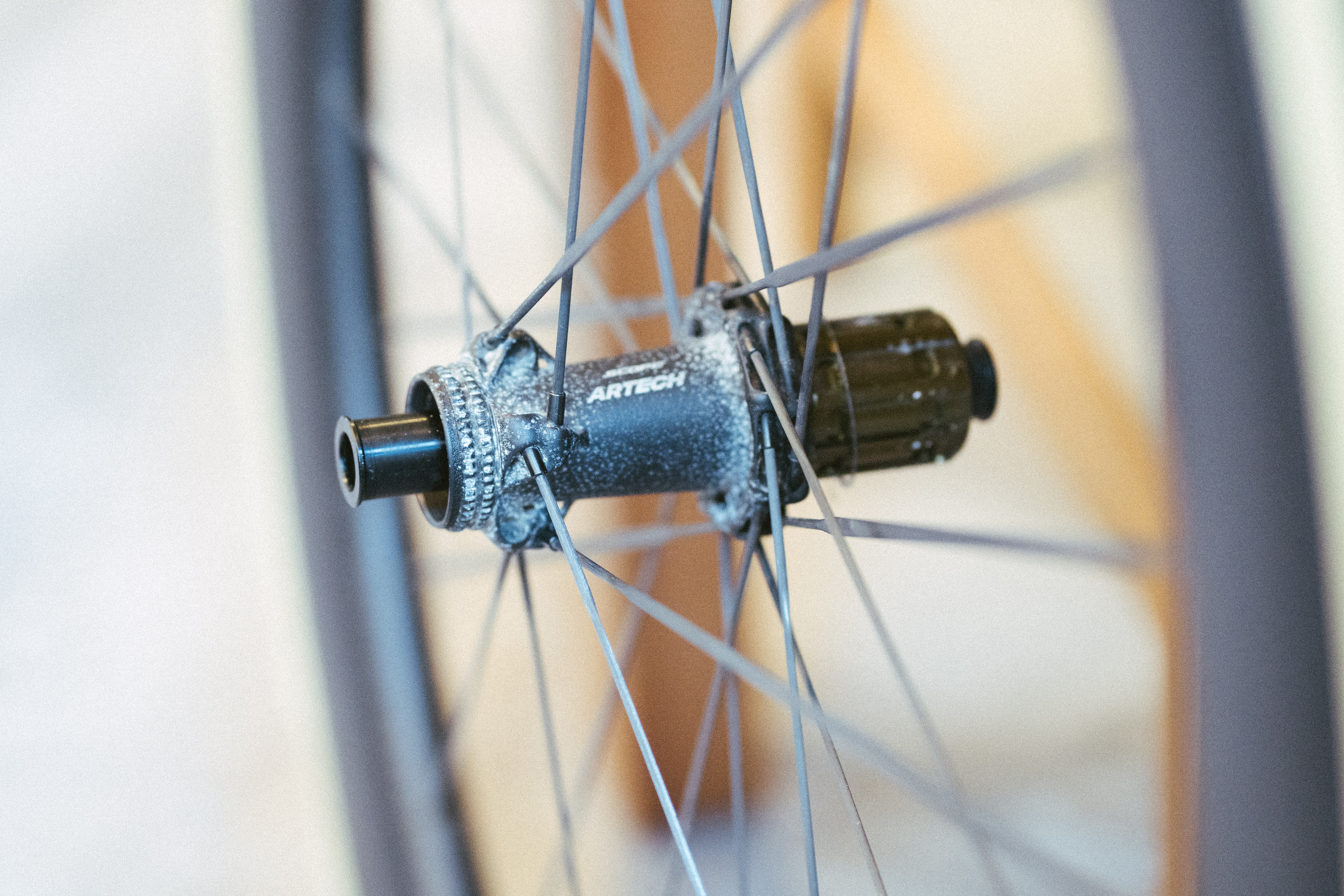
Disconcertingly they also developed white specks on them that had the appearance of the corrosion you often see on exposed aluminium. It even occurred after washing, and wouldn’t rub off with a fingertip. My suspicion is that the 3D-printed surface texture holds water in the minute divots, which then corrodes the hub shell, and once a site of corrosion has occurred it's an ongoing weak spot in the surface coating and will continue to do so. In a wheelset with a price tag as steep as this it’s certainly a bit of a black mark to have the hubs corrode immediately. I put this to Scope, and was given the following response:
“The white dots are harmless but of course visually disturbing. Although Scalmalloy has good resistance against corrosion, water/dirt on the hub surface causes a chemical reaction resulting in the white dots. In all cases you can easily remove these white dots white dots by making use of some water with a little bit of soap to clean the hub shells. Afterwards please dry the hub shell with a dry cloth. Optionally you could apply a ceramic coating (for example: Sonax Ceramic Spray Coating) on a regular base to completely prevent these white dots from appearing. This ceramic coating can be applied after cleaning and drying the hubs."
Call me old fashioned, but even on the most summery of summer wheelsets I think it is the responsibility of the brand rather than the consumer to apply sufficient corrosion-resistant coatings. I would also counter with the fact that corrosion is only harmless initially, and continued corrosion will eventually lead to failure in extreme cases. Realistically I don’t think anyone riding these wheels is going to be leaving them sopping wet and caked in salt week in week out for years, but nonetheless corrosion is corrosion and I'm afraid it's not good enough. I did not remember to dry them with a clean dry cloth, clearly, but even taking this into account it's something that falls short of the mark.
One last thing on the hubs is that there is a modicum of play left in the setup, designed to be taken up by the clamping force of the thru-axle. This is similar to that seen on the Partington R-Series wheels my colleague Tom reviewed recently. I am unable to say that I felt the difference, but it is simply something to be aware of.
Back to the weight savings, the freehub body is an impressively machined piece of titanium alloy. Skeletal freehub bodies aren’t new either, but in combination with the minimal hubs and spoke beds that have only been reinforced at the rim where necessary, plus carbon spokes, you end up with a 65mm deep wheel with an absurdly low measured weight of 1280g. That’s a full 200g or so lighter than a set of Enve SES 6.7, which aren’t exactly a hefty pair in themselves. The Scope Artech 6.A wheels are actually lighter than many older, mid-depth wheels like the Zipp 303 Firecrest despite being nearly twice as deep, and to round out this comparison, they’re within 15g of the DT Swiss Mon Chasseral wheelset, a dedicated shallow-depth climbing wheelset from 2020, all of which translates into a pretty astounding ride.
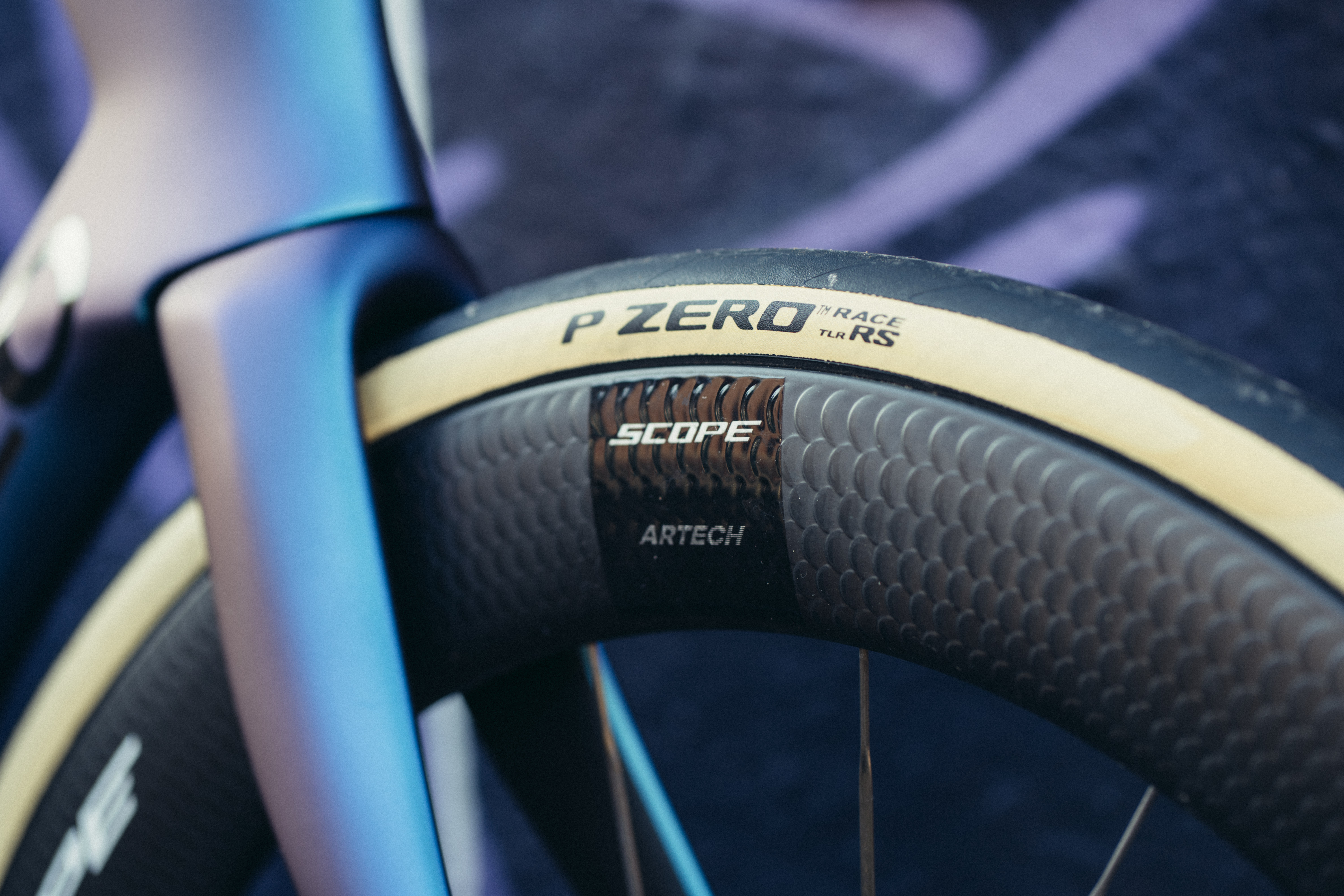
Performance
I am not ashamed to admit that I find reviewing wheels one of the more difficult product families. It’s often quite hard to differentiate between what is being imparted by the wheels, and what is being influenced by a different frameset or tyre, or even tyre pressure. Thankfully though noticing the differences between the Scope Artech 6.A wheelset and other high end options was remarkably easy.
For some back-to-back testing I swapped out the Cadex 50 Ultra wheels on a Giant Propel, and the Princeton Carbonworks Peak 4550 on a Pinarello Dogma, and in both cases there was a tangible impact.
If you blindfolded me and asked me to ride these wheels... well, I’d immediately crash into something. If, however, we were in a scenario where that was possible, I would have assumed the Scope Artech 6.A wheels were far shallower than they actually are. They are so light, and really rather stiff too, that in climbing terms they easily rivalled the Princeton Peak 4550 wheels on the Dogma. On steep climbs the acceleration that is possible from even slow speeds where you haven’t the benefit of momentum is glorious. On longer climbs you don’t have any weight penalty to consider, and so they really open up a world of aero and lightweight all in one.
On the flat they feel as you’d expect a 65mm deep, extremely aerodynamic wheel to feel, except a little less stable. I think part of this is down to expectation: A wheel of this depth is expected to have a certain inertia, historically due to a greater mass (discussions about rotational mass being more important aside), but the Scope Artech 6.A wheels weigh so little they have a darting, slightly jittery character to them that I’ve not experienced the like of thus far. It’s not down to the bike either, as the same sort of thing was present with them fitted to both the Propel and the Dogma, though it was definitely more prevalent in the latter setup. In short, they feel like a far, far shallower wheelset.
Part of this is down to weight, but it is partially a result of also being very stiff. On the Dogma, setup as it is with a very long stem and with an extremely stiff back end, I found the back end tended to leave terra firma more often during hill sprints than the Princeton set. I do think larger volume - 30c or above - tyres are optimal here, as with 28c I fear they could be a little jarring.
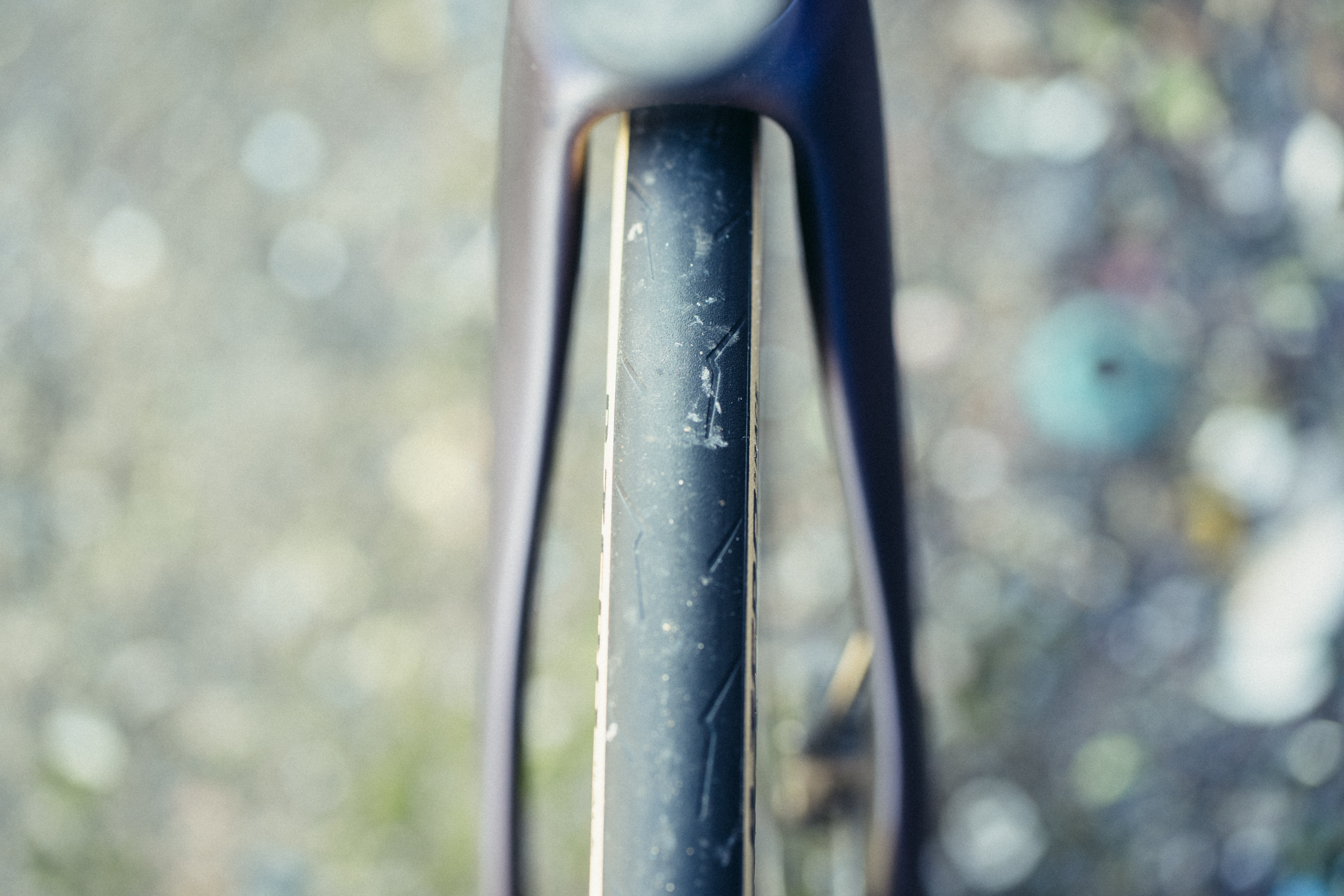
I did take them out as the tail end of Storm Darragh was still whipping through the southwest of England, and they aren’t the most fun to ride in a heavy, gusty crosswind. Again, this is not exactly unexpected with such a low mass and high depth, but it is something to consider: You can quite easily find yourself blown off course, and if you have a bike with a particularly lively front end then at the extreme end of things it can get a little scary. The payback though is that on the 90% of days where it isn’t blowing a gale, you get incredible performance.
I would also say that my use for them, in stormy weather from November through to January is probably not the realistic use case for these wheels. If you drop this much money on a set of wheels like this you probably aren’t going to be as horrible to them as I was, but you will at some point inevitably come up against the elements in their various forms.
While you could probably avoid the rain, you won't be able to sneak up on anyone - these are by far and away the loudest wheels I've ever used, surpassing a set of Hunts that had a freehub of such ferocity that they once made a child cry.
Our own tests show that the Scope Artech 6.A wheels outperformed all others, but the differences were especially stark at the higher yaw angles (the angle at which the effective headwind hits you). For perhaps the only time, on an exposed ridge with a heavy cross-headwind, I noticed the sail effect here. It’s minimal, but I think it’s there, enough at least for me to think ‘this should be harder than it is’ as the wind hits my face.
At the start I alluded to the fact that lab-derived data is only half of the story, but the Scope Artech 6.A wheels really do back up the wind tunnel wattage figures with real world performance that puts many other wheelsets in the shade. That performance, however, comes at quite a price.
Finally, there is the finish. The hub corrosion issues I mentioned earlier are compounded by the fact that the white logos have already begun to chip off. I haven’t babied these wheels, and they aren’t winter training wheels by any stretch despite all my testing taking place in the winter months, but I also haven’t been horrendous to them. This does nothing to affect the physical performance of the wheels, but if I’d dropped several thousand dollars I’d be a little cheesed off that my hubs were beginning to corrode and my logos eroding away.

Value
The RRP of the Scope Artech 6.A wheels is a quite staggering £3,498 / $4,398. Add ceramic bearing - which you probably will, let’s be honest here - and they come in at a hair under £4,000 / $5,000. To quote the wonderful British sitcom Peep Show for a second, which will be entirely lost on our North American audience: Four thousand pounds, Jeremy? Four? That’s insane.
It’s a full $500 more than the most expensive iteration of the Princeton Wake 6560 Evolution. They aren’t quite as expensive as the Partington R-Series MKII R39/44, which are a tiny bit lighter, but I suspect they are more aerodynamic (without having actually tested them directly) thanks to a far deeper depth and all the wibbly wobbly scales.
Value and cost are not the same thing. If you want a top-performing wheelset, perhaps the top-performing wheelset considering aero credentials, weight, and ride characteristics, then I don’t think it’s unfair for Scope to slap a very top-end price tag on them. From a pure performance point of view I think they actually represent decent value, but where they fall down for me is on the finish.
It’s one thing for a lightweight wheelset to feel a little fragile - that’s totally normal - but for the hubs to show visible signs of corrosion and the logos to be flaking off on a wheelset at this price point leaves a lot to be desired.


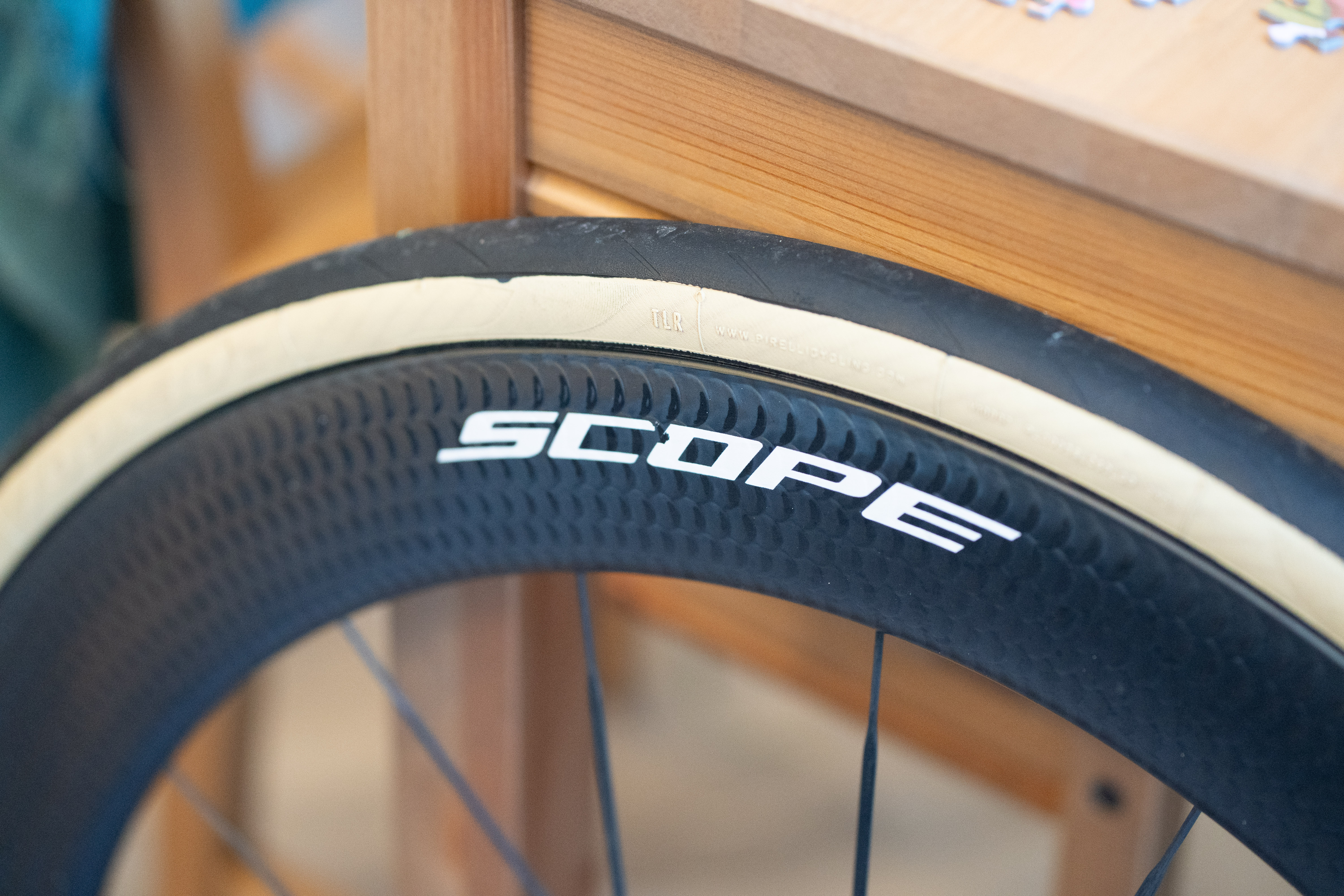
Verdict
I love these wheels, I really do. They are truly remarkable to ride, except on the odd occasion when it’s really very gusty when they become a little scary. They somehow manage to have the characteristics of both a beautiful lightweight climbing wheelset and a set of whoosh-whoosh silly deep aero wheels all rolled into one.
Because they aren’t mine and I have to give them back the corrosion hasn’t bothered me, but with my consumer head on it would, which is a shame.
If you are in the market for the ultimate wheel upgrade I think this is probably it, but do remember to treat them, if not with kid gloves, with a dry cloth and a ceramic coating spray.
| Design and aesthetics | I can't fault the design, but I can fault the finish slightly. Corroding hubs, even on a set of summer race wheels, is not good. | 6/10 |
| Performance | On any terrain I can't think of a wheel I'd rather ride. Even on very hilly terrain they perform brilliantly. | 10/10 |
| Weight | Absurdly light, not just for a wheel of this depth, but for a wheel of any depth. | 10/10 |
| Tubeless Compatibility | Well behaved, well taped, easy to setup and a hook means it works with most tyres. Not having a solid rim bed does introduce a weakness, but the flip side is you get internal nipples for aero gains. | 9/10 |
| Value | Very, very expensive, but also very, very high performance. If it weren't for the finishing issues I'd score it higher. | 8/10 |
| Overall | Row 5 - Cell 1 | 86% |
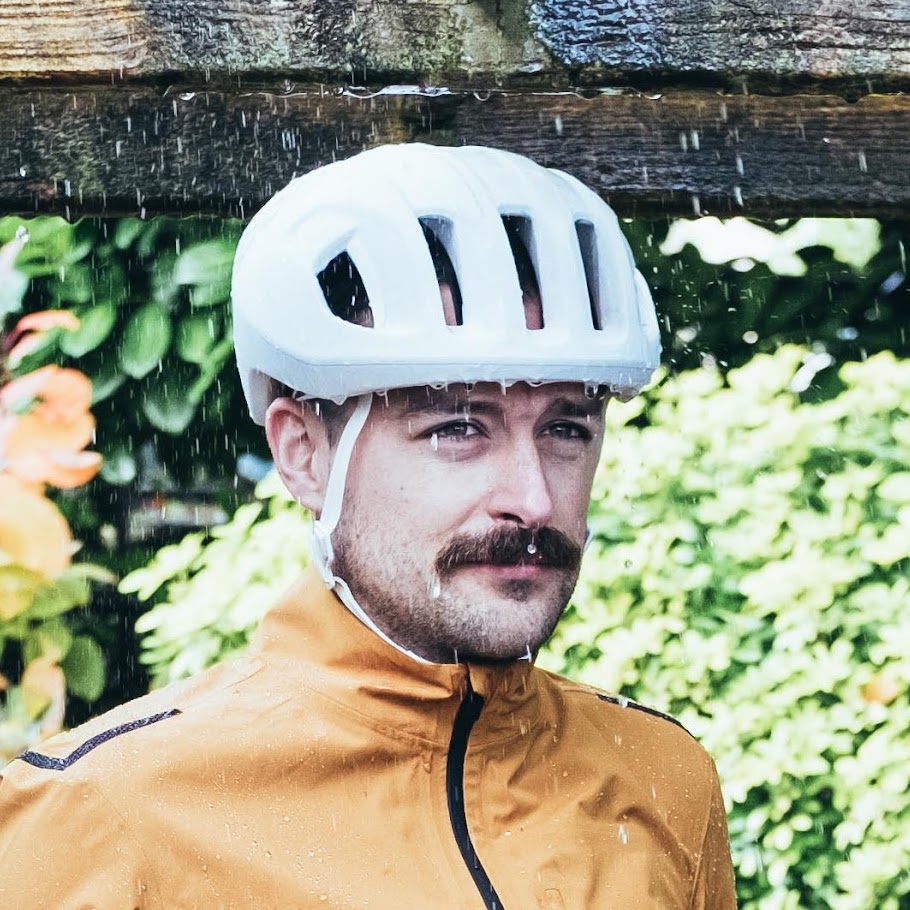
Will joined the Cyclingnews team as a reviews writer in 2022, having previously written for Cyclist, BikeRadar and Advntr. He’s tried his hand at most cycling disciplines, from the standard mix of road, gravel, and mountain bike, to the more unusual like bike polo and tracklocross. He’s made his own bike frames, covered tech news from the biggest races on the planet, and published countless premium galleries thanks to his excellent photographic eye. Also, given he doesn’t ever ride indoors he’s become a real expert on foul-weather riding gear. His collection of bikes is a real smorgasbord, with everything from vintage-style steel tourers through to superlight flat bar hill climb machines.
